Sellafield Robots Leading An Evolution In Nuclear Decommissioning
4th November 2023
ROBOTS at Sellafield are delivering breakthroughs at the site with learnings shared with the wider nuclear industry.
The use of robots is increasingly commonplace at Sellafield, helping to make work safer, faster, and cheaper, and delivering valuable lessons for other nuclear sites in the UK.
Adopting new and innovative ways of using these developing technologies continues to change the way we think about clean-up and decommissioning.
Sellafield's remote operated vehicles (ROV) department based at the Engineering Centre of Excellence in Cleator Moor, West Cumbria are at the forefront of taking standard equipment and software and adapting it for a range of on-site needs.
They recently became the first in the world to use a light detection and ranging (LiDAR) laser scanning device on a ROV in a high radiation environment, allowing the robot to navigate and build a 3D image of the hazardous area and removing the need for humans to enter.
Calvin Smye, ROV equipment engineer, Sellafield Ltd said:
Everything we are using is off the shelf but by adding different payloads, like a LiDAR senor and a radiation monitor, we are adapting them to deliver for our business.
Since the introduction of this technology we've really been at the forefront of testing it and adjusting it to our needs and are now leaders in the nuclear industry for applying it.
We've seen supply chain colleagues deploying the same technology at other nuclear sites following our success.
The robot in question was Spot the robot dog, now a familiar sight on many jobs at Sellafield, from inspections of buildings and equipment to the sorting and segregation of wastes.
Spot’s capabilities were shared with industry colleagues during a live demonstration at one of the site’s oldest buildings, Calder Hall.
Like many buildings built in the 1950s, Calder Hall has areas where asbestos is a known hazard, making them inaccessible for humans and difficult to decommission.
AtkinsRealis, supported with some of the ROV teams equipment and documentation, recently utilised Spot to conduct a livestreamed inspection - via the robot’s on-board camera - and build an accurate understanding of the condition of the area and how best to clean it up.
The same robots are now being used across other Nuclear Decommissioning Authority sites in the UK, including at Dounreay in Scotland, demonstrating how learning is being shared to deliver better outcomes.
But it’s not all robot dogs, the team has also used an IPEK crawler robot – commonly used for sewer pipe inspections – to inspect the structural integrity of pipework from up to 250 meters away.
Sellafield is also exploring the use of ROVs to detect potentially dangerous gases in work areas before humans are sent in, much like the canaries used in coal mines over 200 years ago. They’ve recently conducted their first trial using a dosimeter designed by the Radiometrics Systems Group.
Deon Bulman, ROV equipment programme lead, Sellafield Ltd said:
The adoption of new technology is progressing at pace at Sellafield as people start to see the benefits.
The technology is here to support people, not replace them, and those that embrace it soon see the advantages.
If we can do one task that removes the need for a person to enter a hazardous area, that’s a win.
As well as improving safety, ROVs also bring advantages in delivering significant cost savings while improving operational efficiency.
Rav Chunilal, head of robotics and artificial intelligence, Sellafield Ltd said:
The use of ROVs at Sellafield marks a significant milestone in our commitment to safety and efficiency.
These cutting-edge robots allow us to access dangerous and challenging areas remotely, removing humans from harm’s way and saving time and costs for maintenance and inspections.
By embracing remote technologies, Sellafield is pioneering a new era in the nuclear industry and setting a standard for excellence in decommissioning operations worldwide.
Related Businesses
Related Articles
TAE Technologies and UKAEA partner to commercialise fusion tech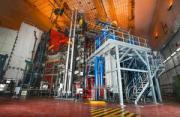
Joint venture to develop neutral beams for fusion and non-fusion applications, creating high-skilled jobs and establishing a critical supply chain. TAE Technologies, a leading US private fusion energy firm with over 25 years at the forefront of scientific innovation, today announces a bilateral and reciprocal investment commitment with the United Kingdom's national fusion laboratory, the UK Atomic Energy Authority (UKAEA) to commercialise TAE's proprietary particle accelerator technology for the global market.
Buried Hazards, Unfinished Business - What the NDA's 2025 Progress Report Really Tells Us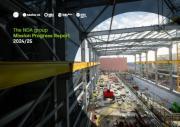
The Nuclear Decommissioning Authority (NDA) has released its 2025 Mission Progress Report is a slightly sprawling document chronicling one of the UK's most complex environmental undertakings. The safe dismantling of its early nuclear legacy.
New recruit officers join the Civil Nuclear Constabulary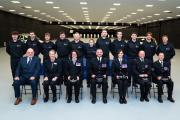
The Civil Nuclear Constabulary (CNC) welcomes its newest recruits. The CNC hosted two passing out parades for the graduating Authorised Firearms Officers (AFOs) of Initial Foundation Programme (IFP) 106.
Dounreay's next generation of talent honoured by apprentice award
Nuclear Restoration Services Dounreay's Kate Thomson has won Modern Apprentice of the Year at the Highlands & Islands Apprenticeship Awards in Inverness. Kate, who is in the second year of her apprenticeship in commercial and quantity surveying, said she was thrilled by the honour.
Taskforce calls for radical reset of nuclear regulation in UK
Nuclear Regulatory Taskforce publishes final report and calls for radical reset of overly complex nuclear regulatory system. An overly complex nuclear regulatory system has contributed to the "relative decline" of the UK's ability to deliver faster and cheaper nuclear projects.
Funding approved for Wick Harbour port consultant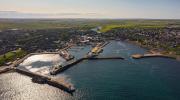
A specialist ports consultant has been appointed to develop a long-term strategic plan for Wick Harbour Authority (WHA) in Caithness. WHA has secured £47,775 from Highlands and Islands Enterprise (HIE) and the Nuclear Restoration Services, NRS Dounreay towards the cost of the services.
Fallon Campbell From Melvich Near Thurso Named As Apprentice of the Year At Awards In London
Rising star from North Scotland honoured at event to celebrate brightest and best in industry. An electrical apprentice from North Scotland is celebrating after being recognised for her contribution to industry at the 13th annual Engineering Construction Industry ECI Training and Development Awards in London.
The NDA Group Graduate Programme: more than a job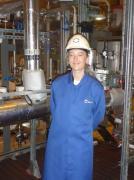
The NDA group graduate scheme offers far more than just a stepping stone into the nuclear industry; it's a chance to grow professionally, explore new places, and become part of a supportive community. Nuala Ledward, Assurance and Performance Graduate, shares how her secondment to Dounreay brought these benefits to life.
UKAEA develops 3D printing for fusion components
At its recently opened Central Support Facility (CSF), UKAEA has commissioned an electron beam additive manufacturing machine that can be used to incorporate tungsten into components, alongside a selective laser manufacturing machine. Fusion can play a key role in a global low carbon energy future.Advancing Fusion Remote Maintenance: Industry Collaboration Driving Innovation
As part of the Fusion Futures (FF) programme, UKAEA's Remote Applications in Challenging Environments (RACE) has partnered with industry leaders to develop two groundbreaking technologies for remote maintenance in fusion energy engineering. Thanks to FF funding, industry has taken the lead in maturing UKAEA technology concepts—delivering real-world solutions that enhance operational autonomy and reduce maintenance burdens in extreme environments.
